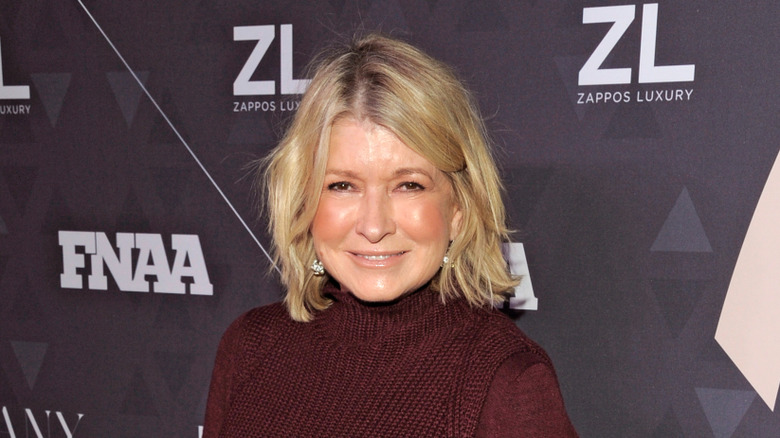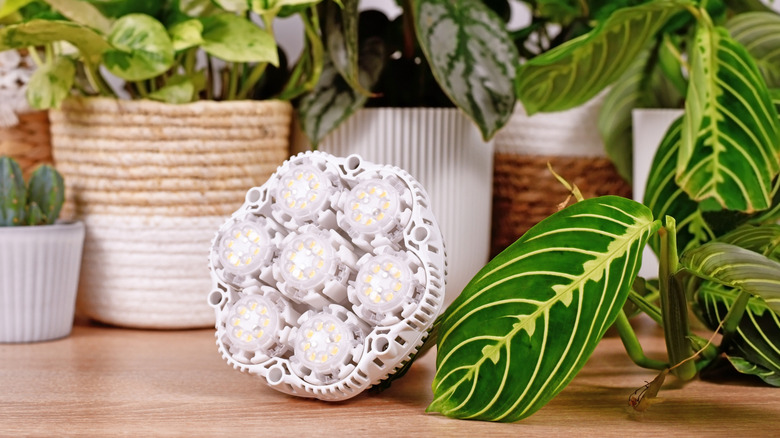Martha Stewart's Secret To Maintaining Tropical Plants In The Winter
We may receive a commission on purchases made from links.
The stable on Martha Stewart's sprawling New York estate houses a Fell pony named Ben Chunch, several Friesian horses, and, come winter, towering potted plants. According to The Martha Blog, Stewart uses this temperature- and humidity-controlled structure to nurture palms, an avocado tree, and other tropicals that can't survive freezing. One of Stewart's top tips for overwintering potted plants, especially the tropical ones, is ensuring that they receive enough light. LED grow lights are essential tools for this task.
Stewart's energy-efficient LED grow lights switch on as the sun goes down, giving her miniature rainforest a bright night. To mimic the way sunlight reaches the plants outdoors, a trio of evenly spaced Spider Farmer G-series LED grow lights hangs from the stable ceilings. Each unit retails for about $400, weighs under 20 pounds, and has a controller box that clicks into it. Stewart appreciates how "the bar-style design allows proper light distribution and airflow," which discourage plants from becoming leggy and contracting fungal diseases. She also likes that the lights' distance from the plants can be adjusted as needed.
Want to overwinter your tropicals like Stewart does, but on a smaller scale? If possible, move your potted plants to a greenhouse or hoop house. If that type of space isn't available, try a garage or shed that's at least 45 degrees Fahrenheit. Then make your LED lighting system as sunlike as possible. Remember, tropicals crave solar rays, even when they're vacationing indoors for the winter.
Helping your plants weather winter with LED grow lights
Finding the right grow light matters for tropical plants. Spider Farm's SF series contains LEDs similar to Martha Stewart's but tailored to novice gardeners and smaller growing spaces. They're also not as pricey, with most retailing for $70 to $250. These aren't the cheapest option on the market either, but they have features lower-priced options tend to lack. For example, they're full spectrum, which means they reproduce the entire range of colors found in sunlight. The different hues work together to drive plant growth and photosynthesis. Many LED grow lights deliver only red and blue light. In other words, it might be worth it to spend a little more on a good-quality full-spectrum LED.
Heavy use is in your LED system's future: Most plants need 16 to 18 hours of daily artificial light to thrive indoors. Your tropicals' thirst for sunlight will be strongest if their new location is windowless. Keep this in mind when comparing different types of grow lights.
Sarah Browning, an extension educator at the University of Nebraska–Lincoln, suggests 25-watt LEDs for plants that demand lots of light. Using one of these per square foot of plants is ideal. Each of Stewart's 480-watt lights shines on 16 square feet of greenery, exceeding this recommendation. A less powerful setup won't yield quite the same results. Browning also advocates positioning LEDs so the regions they illuminate overlap. That helps all plants receive a similar brightness level. Stewart mounts her LEDs directly above her plants to distribute the light equally. You can do this, too, even if your grow lights aren't the most deluxe model.

